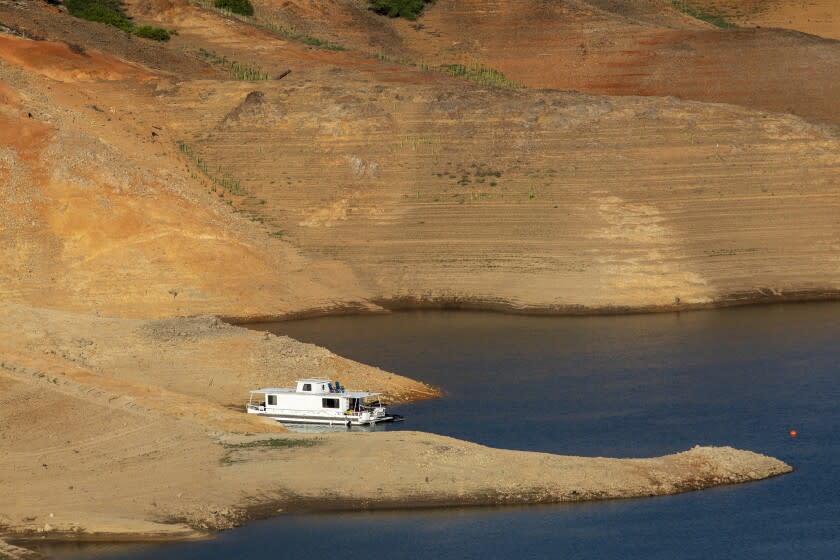Editorial: What you can do — and what you can't — to deal with California's driest year

It can’t be because everything else was going so well. It can’t be because the rain gods thought we had it too good, or that there were too few flames burning too few trees and homes, or that the summer wasn’t hot enough or there was too little violent crime or not enough deadly disease. We’ve had more than our fill of all that.
In fact, we may never know the reason why last year was not only dry, but was California's second-driest year on record, according to the state Department of Water Resources. And the prospects for the current water year, which began on Oct. 1, aren’t any better.
What can California residents do, individually, to cope with the lack of rain and snow, and the shortness of our water supplies?
Let’s be blunt: Not a heck of a lot. We can pull out our lawns, dig swales (lower areas in which rainwater and runoff can gather)
in our yards, take shorter showers, install low-flow toilets, grow water-wise gardens and do all the other things we’ve been telling one another to do, and have been actually doing, for decades now. Those are all the right and responsible steps to take. Every little bit helps. But they are indeed just little bits.
Deep discounts for using less than the average daily residential consumption level might provide additional incentives to save, but it’s hard to shake the feeling that water we don’t use in the shower today will just be slurped up by the guy across the street or the almond grower up the state.
Steep fines for overuse are limited by Proposition 218, a quarter-century-old ballot measure that (as interpreted by the courts) sharply limits use of price incentives to manage supplies. By law, water is priced not according to the laws of supply and demand but by the cost to deliver it, as though it were as inexhaustible as air.
This state’s water challenge is double-sided. We have to cope with periodic emergency shortages, brought on by streaks of dry years. And at the same time we have to deal with our long-term supply by finding a way to replace the once-reliable Sierra Nevada snowcap, which no longer predictably releases water to mountain streams during the spring and summer months, to fill rivers, supply reservoirs, irrigate farm fields and flow through our taps.
A warming planet makes changes harder to predict. It is likely that hotter temperatures will mean a continuing decrease in runoff from the snowpack. But changing weather patterns could also mean more flooding, with the same levels of precipitation now falling all at once as rain instead of snow. Or it could mean less precipitation altogether — or more. California has to be ready for various possibilities.
Californians are a resilient bunch, having weathered numerous droughts with a sense of duty. But after we’ve changed out our toilets to reduce water use and installed gray-water systems to keep our shade trees alive, none of us alone has the ability to re-engineer the state or rewrite the dated system of water rights and regulations. These are tasks that necessarily must be performed on a larger scale and that we entrust to our elected leaders and lawmakers or to one another, at the ballot box.
Agriculture is the state’s largest consumer of water, and its practices have changed as well. Yet in recent years more land has been converted to thirsty nut crops. (Each almond in your plastic jar, or crushed to make your almond milk, or ground into the flour that makes your almond facial scrub, represents about a gallon of water.) We remove our lawns but scratch our heads at the sight of alfalfa being irrigated and exported.
So as we plant the xeriscape in the front yard and let our cars stay dirty for a little while longer, we wonder about the plan going forward into the dry 21st century.
This story originally appeared in Los Angeles Times.

